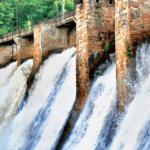Few years back before airlines based out of Middle East, Bangkok used to be a hub that connected Nepal to the world. As I clearly recall, I have fond memories of the long seventeen hours flights from Bangkok to New York and the return flights from Los Angeles to Bangkok via Tokyo. The connectivity was not just limited to facilitating travels but also in forms of fostering trade. Notably, we imported readymade garments from Bangkok long before we had access to direct access from China. This reflection has made me realize it is about time to reimagine trade and investment between Nepal and Thailand.
In my recent visit to Thailand, I witnessed the commitments of Embassy of Nepal in Thailand on fostering trade and investments between Nepal and Thailand, by organizing series of events bringing Nepali and Thai Businesses together to explore opportunities. This resonated to what Nepal Economic Forum along with the Royal Embassy of Thailand in Nepal did in September 2024 that involved organizing an interactive session on “Embracing Nepal’s Post-LDC Era for Thai-Economic Opportunities”. The event continues to work on building an understanding around what is possible in Nepal for Thai businesses to invest and engage with in Nepal from the Royal Embassy of Thailand’s end. I was even more excited to see how Embassy of Nepal in Thailand had similar commitments to foster bilateral economic cooperations between these two countries.
Deep inside as we reflect as of where these business and investment related ties can be fostered, the sectors are clear. There is tourism with Nepal positioning as a pilgrimage destination for Buddhist coming to the birthplace of Lord Buddha coupled with nature-based tourism for Thais. With a strong currency that gives roughly four Nepali Rupees to a Thai Baht, there is value for money. The other sector is on agriculture and agro-processing where Thai market leadership in the region can be leveraged in bringing technical assistance and investment along with providing access to markets to Nepali goods and services. The third most important area is infrastructure development with Thailand seeing many international leaders in design, construction and project management. When I was in Bangkok on October 25, 2024, the One Bangkok development project opened. This USD 4 billion project would be the iconic project in Thailand to showcase Thai competencies in terms of what Thailand based companies can deliver. Thai companies are spreading their wings managing projects in neighboring countries and even large markets like India and China. There are many urban development projects on open spaces are also taking place that provides much learning and competencies for Nepal.
For Nepali companies wanting to get to Thailand, the hospitality and food and beverages sectors look promising with the availability of large Nepali speaking workforce in Thailand. While the number of Thais of Nepali origin is relatively small, there are large number of Nepalis of Burmese origin working in Thailand. In the restaurants and markets, you can be surprised by the conversations you hear in Nepali language and Nepali songs playing at these establishments. Recently, a restaurant Tibet Gate has come up in the tourist district of Sukhumvit, giving authentic Himalayan taste to the people of Thailand. Few restaurants, like Diyalo Griha in Ratchathewi and The Himalayan Kitchen in Pratunam, that serve authentic Nepali food do not have much visibility. Himalayan food-based restaurants and artisan coffee/tea chains hold immense business opportunities. Thailand is expected to see 34 million tourists in 2024 and with a population of 70 million, the market has potential to serve 100 million people!
In terms of connectivity, Thailand will continue to be the hub for Nepal in the east. The railway connecting China and Laos is already operational. A 873km high-speed rail project will connect Bangkok with the Laos-China railway. In next ten years, the overland connectivity through the Asian highway will be a reality with India very keen on accelerating its road connectivity with the ASEAN region. Nepal just needs to latch on to these upcoming projects. There is also a Schengen type visa on the anvil in the region connecting six of the countries in Southeast Asia. The pilot project with single visa for Cambodia and Thailand is being considered. For Nepalis, till early 1990s, we could get visa on arrival, but it has moved from applying at embassy to now applying at the contractor VFS. At Bangkok airport, the e-gates are already installed and like in Dubai and Singapore, passport control can move contactless for people with e-passports. For Nepalis, the visa regulation needs to be reviewed especially for people wanting to travel to Thailand on business. Five-year visas based on reciprocity should be implemented. Nepalis should also be eligible to participate in the residence program.
Thailand and Nepal hold immense potential for co-operation. As My Thai friend, who has a company working on hotel projects, emphasized, businesses and investors need to leverage the common culture that we share. A young Nepali of Burmese origin working in a restaurant said that Thais have a soft corner for Nepal and Nepalis demonstrated by the fact that Nepalis of Burmese origin find shelter in Thailand whenever there is trouble in Myanmar. While government to government efforts are being made by Thai embassy in Nepal and the Nepali Embassy in Thailand, people-to-people efforts with Nepalis and Thais need to be tapped into. It’s time to re-imagine the future of the relationship and have more business, investment, trade and tourism between these two countries.
Sujeev is the founder CEO of beed. He leverages over 25 years of experience in diverse fields and geographies to advise, lead and inspire. With comprehensive networks in Nepal’s public, private, civil and diplomatic sectors, Sujeev is a trusted business and policy advisor and respected strategic thinker. From economies of developing countries to economies of human beings, he moves across different worlds, with his passion for the Himalayas being the axis.





